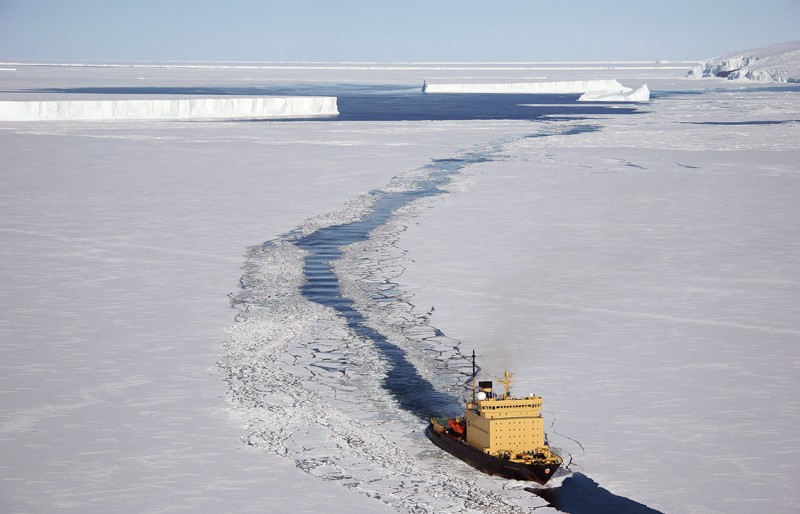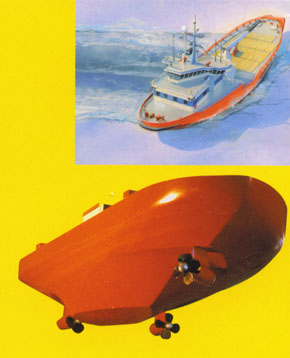
One of the most fascinating modern technological innovations in my opinion, is the icebreaking ship. Known as "icebreakers" these naval vessels with specially designed hulls open up shipping routes and arctic exploration opportunities that would otherwise be inaccessible.
To qualify and function as an icebreaker, a ship must have three main characteristics: It must have a reinforced hull, an overall shape which pushes and clears ice from it's pathway, and sufficient power to push through and up onto ice.
By using momentum and spoon-like hull shape to slide atop sheets of ice, the icebreaker uses it's weight to snap the layers of ice underneath.
Recent developments in icebreaking ship technology include "oblique" icebreakers and resonance breaking.
 Oblique icebreakers are constructed differently in that an additional hull propeller allows them to break ice while traveling sideways...which equates to a wider channel. This wider channel accommodates large cargo ships---by using a single sideways breaker, rather than two narrow-lane breakers, ice clearing costs are reduced significantly.
Oblique icebreakers are constructed differently in that an additional hull propeller allows them to break ice while traveling sideways...which equates to a wider channel. This wider channel accommodates large cargo ships---by using a single sideways breaker, rather than two narrow-lane breakers, ice clearing costs are reduced significantly.
One of the most interesting breaking technology developments of recent years, is ice breaking by resonance. As demonstrated by the University of Southern California, resonance sound waves can be used to shatter glass. Russian navel engineer Victor Kozin took the experiment a step further, by developing an icebreaking vessel which shatters ice using the same powers of resonance waves. However, there doesn't yet appear to be any commercial applications of Kozin's resonance technology.
Here is a concluding video sample of his method at work:
To learn more about icebreakers, visit Wikipedia.
To follow the world's leading arctic ship developer, visit Aker Arctic.





















